Potrebujeme váš súhlas na využitie jednotlivých dát, aby sa vám okrem iného mohli ukazovať informácie týkajúce sa vašich záujmov. Súhlas udelíte kliknutím na tlačidlo „OK“.
ASTM E2651-13
Standard Guide for Powder Particle Size Analysis
Automaticky preložený názov:
Štandardné príručka pre Powder Analýza veľkosti častíc
NORMA vydaná dňa 1.11.2013
Informácie o norme:
Označenie normy: ASTM E2651-13
Poznámka: NEPLATNÁ
Dátum vydania normy: 1.11.2013
Kód tovaru: NS-45809
Počet strán: 7
Približná hmotnosť: 21 g (0.05 libier)
Krajina: Americká technická norma
Kategória: Technické normy ASTM
Kategórie - podobné normy:
Anotácia textu normy ASTM E2651-13 :
Keywords:
acoustic attenuation, aerosol electrical mobility, air permeability, centrifugal sedimentation, dispersion, electrical sensing zone, electrozone, image analysis, laser diffraction, light scattering, particle size, particle size analysis, particle size distribution, powder, sampling, sedimentation, sieving, static image analysis, ICS Number Code 19.120 (Particle size analysis. Sieving)
Doplňujúce informácie
| Significance and Use | ||||||||||||||||||||
|
4.1 The myriad array of particle size analysis techniques available to the modern-day powder technologist is both daunting and confusing. Many of the techniques are applicable only to certain types of materials, and all have limited ranges of applicability with respect to powder particle size. This guide is an attempt to describe and define the applicability of each of the available techniques, so that powder technologists, and others interested in powders, may make informed and appropriate choices in characterizing their materials. 4.2 This guide is intended to be used to determine the best and most efficient way of characterizing the particle size distribution of a particular powder material. It may also be used to determine whether a reported powder particle size, or size distribution, was obtained in an appropriate and meaningful way. 4.3 Most particle size analysis techniques report particle size in terms of an “equivalent spherical diameter:” the diameter of an ideal spherical particle of the material of interest that would be detected in the same manner during analysis as the (usually irregular-shaped) actual particle under the same conditions. The different techniques must necessarily use different definitions of the equivalent spherical diameter, based on their different operating principles. However, when analyzing elongated particles, the size parameter most relevant to the intended application should be measured; for example, length (maximum dimension). 4.4 Reported particle size measurement is a function of both the actual dimension or shape factor, or both, as well as the particular physical or chemical properties of the particle being measured. Caution is required when comparing data from instruments operating on different physical or chemical parameters or with different particle size measurement ranges. Sample acquisition, handling, and preparation can also affect reported particle size results. |
||||||||||||||||||||
| 1. Scope | ||||||||||||||||||||
|
1.1 This guide covers the use of many available techniques for particle size measurement and particle size distribution analysis of solid particulate (powder) materials. It does not apply to analysis of liquid droplets or liquid aerosols. The guide is intended to serve as a resource for powder/particle technologists in characterizing their materials. 1.2 This guide provides more detail regarding the particle size analysis methods listed in Guide E1919, which is a compilation of worldwide published standards relating to particle and spray characterization. Although Guide E1919 and this guide are both extensive, neither is all inclusive. 1.3 The principle of operation, range of applicability, specific requirements (if any), and limitations of each of the included particle size analysis techniques are listed and described, so that users of this guide may choose the most useful and most efficient technique for characterizing the particle size distribution of their particular material(s). 1.4 The values stated in SI units are to be regarded as standard. No other units of measurement are included in this standard. 1.5 This standard does not purport to address all of the safety concerns, if any, associated with its use. It is the responsibility of the user of this standard to establish appropriate safety and health practices and determine the applicability of regulatory limitations prior to use. |
||||||||||||||||||||
| 2. Referenced Documents | ||||||||||||||||||||
|
Podobné normy:
Historická
1.11.2013
Historická
1.7.2014
Historická
1.12.2008
Historická
1.7.2007
Historická
1.5.2012
Historická
1.10.2008
Odporúčame:
Aktualizácia technických noriem
Chcete mať istotu, že používate len platné technické normy?
Ponúkame Vám riešenie, ktoré Vám zaistí mesačný prehľad o aktuálnosti noriem, ktoré používate.
Chcete vedieť viac informácií ? Pozrite sa na túto stránku.



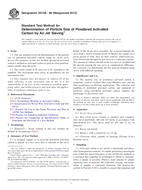 ASTM D5158-98(2013)..
ASTM D5158-98(2013)..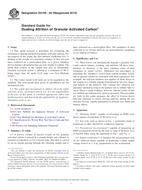 ASTM D5159-04(2014)..
ASTM D5159-04(2014)..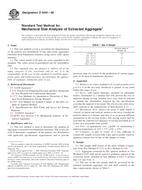 ASTM D5444-08
ASTM D5444-08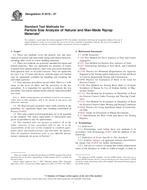 ASTM D5519-07
ASTM D5519-07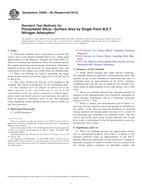 ASTM D5604-96(2012)..
ASTM D5604-96(2012).. ASTM D6393-08
ASTM D6393-08
 Cookies
Cookies
